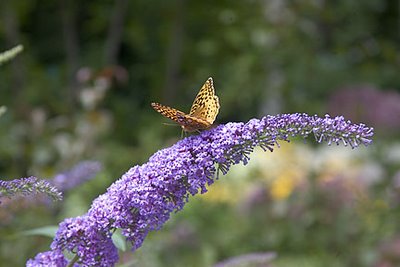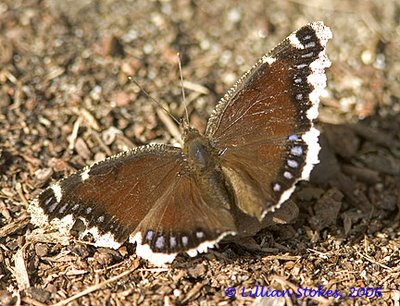Check out the Evening Grosbeaks on the Maine feeder cam, sponsored by the Finch Research Network. (watch it full screen for the best effect)
Search This Blog
Saturday, December 03, 2022
Evening Grosbeaks feeder cam!!
Check out the Evening Grosbeaks on the Maine feeder cam, sponsored by the Finch Research Network. (watch it full screen for the best effect)
Thursday, November 24, 2022
Wednesday, November 16, 2022
How You Can Help Birds!
Thursday, October 27, 2022
The Finches are Coming!! Fill Your Feeders!
Here they come! It's getting finchy out there! There were big numbers of migrating finches seen recently at Tadoussac bird observatory (The Observatoire d’Oiseaux de Tadoussac) which sits at the mouth of the St. Lawrence River in Quebec, and had 2,232 Pine Grosbeaks, 474 Common Redpolls, 213 Evening Grosbeaks, 134 White-winged Crossbills and 43 Pine Siskins. Keep those feeders filled and fingers crossed you will see some of these beautiful irruptive finches that come down to thrill us every few years.
Friday, October 21, 2022
State of the Birds 2022, bad news with a little good news
The new State of the Birds Report 2022, https://www.stateofthebirds.org/2022/, is out and it is not good news. 3 Billion (1 in 4) birds have been lost from the United States and Canada since 1970. Currently, birds are declining in every habitat type except wetlands which have had heavy investment with resultant gains. There are 70 species at a tipping point, which have lost 2/3 of their populations in the past 50 years, such as Bobolink, Prairie Warbler, Black and Brown-capped Rosy-Finches, and many more. The good news is that there are many steps that can be taken to help the situation if we take action now! Go to the link above to download the report and learn how you can help.
Sunday, October 09, 2022
Global Big Day highlights
Nashville Warbler
Swainson's Thrush
Friday, October 07, 2022
October Big Day, Oct. 8, Participate and Have Fun!
Participate in October Big Day!!
Mark your calendars for October Big Day—8 October 2022! Big Days are a 24-hour opportunity to celebrate birds near and far. Last October, more than 32,000 people from 195 countries submitted 78,000 checklists with eBird, demonstrating the power of birds to bring people together.
Wherever you are on 8 October, take a few minutes to join the world of birding on October Big Day. Participate from anywhere—even home! By taking part in October Big Day you’re also celebrating Global Bird Weekend and World Migratory Bird Day. Be a part of the global team and help set a new record for October birding.
Monday, September 12, 2022
It's Prime Time For Hawk MIgration!!
The hawks are coming! The hawks are coming! We're entering prime hawk migration time for birders in the northern and eastern half of the U.S. Some hawks, such as Sharp-shinned and Cooper's Hawks, Merlins, and American Kestrels, will move by flapping, but Broad-winged Hawks, an abundant migrant, travel by using rising thermals. Weather conditions of clear and sunny, with mild north or northwest winds, should produce ideal conditions for Broad-winged Hawk migration. The Hawk Migration Association of North America runs a large website where all the dates and numbers of migrating hawks are recorded. Go there to keep track of migration or to find a hawkwatch site in your area. Most of the Northeast hawkwatch sites will see many Broad-winged Hawks this fall as well as many other raptors.
Here are some tips for watching hawks:
1. Prime Broad-winged Hawk migration in the North is Sept. 11 to 25, in the South (TX) it is Sept. 25th to Oct. 10.
2. Prime Sharp-shinned Hawk migration in the Northeast is Sept. 1 to Oct. 10, in the Mid-Atlantic States it is Sept. 10 to Oct. 20, in the West it is Sept. 11 to Oct. 31.
3. Hawks usually move most under sunny skies with mild northwest, north, or northeast winds. Broad-winged Hawks require thermals to move.
4. Go hawk-watching at one of the many "official" hawk-watch sites here. Or find your own by going to a hill, mountain, or tall structure available to you that has good views to the north, because that is the direction the hawks are coming from.
5. Bring binoculars that are at 8 power, or even 10 power if you have them. Scan slowly back and forth across the sky at different heights to find the hawks. Most hawks will be fairly far away and some may look like specs. Learn hawk shapes at a distance to identify them. Many hawkwatchers also use spotting scopes to locate hawks.
6. Here's a brief look at the most common hawks you will see:
* Broad-winged Hawks. These are medium-sized hawks, 16" long, with broad wings, and soar together in groups. Look for the broad black-and-white tail bands seen on the adults, usually visible even at a distance. Juvenile Broad-winged Hawks have thin tail bands and dark streaking that is usually heaviest on the sides of the breast.

* Sharp-shinned Hawks. These are small, about Blue Jay-sized, 12" long, hawks in the accipiter group. They migrate mostly singly with flap-flap-flap glide flight and have short rounded wings and a somewhat long tail that has a squared end.

* Cooper's Hawks. These are extremely similar to Sharp-shinned Hawks, and are a tricky ID challenge, but are somewhat larger, 17" long, with a longer, rounded tail and larger, longer head and similar flight pattern.
 * American Kestrels. These are a type of falcon. They are smaller than a Sharp-shinned Hawk, about 10 1/2" long, with pointed wings and a long tail and fly mainly with continuous flapping.
* American Kestrels. These are a type of falcon. They are smaller than a Sharp-shinned Hawk, about 10 1/2" long, with pointed wings and a long tail and fly mainly with continuous flapping. * Merlins. Very similar to a Kestrel but darker and larger, about 12" long. Has broad, pointed wings and a somewhat shorter tail than a Kestrel. Flies swiftly and strongly. See yesterday's blog entry for details on Merlin vs. Kestrel ID.
* Merlins. Very similar to a Kestrel but darker and larger, about 12" long. Has broad, pointed wings and a somewhat shorter tail than a Kestrel. Flies swiftly and strongly. See yesterday's blog entry for details on Merlin vs. Kestrel ID. * Turkey Vultures. Very large, about 27" long, all black birds that constantly soar with their wings held in a V.
* Turkey Vultures. Very large, about 27" long, all black birds that constantly soar with their wings held in a V.7. Keep track of your numbers and turn them in to your local bird or hawk-watching organization.
Tuesday, September 06, 2022
Shorebird ID, Start With Size
 shorebirds are migrating now and some of the best ways to ID them are by size and shape. One of the ways to judge size is to look at the shorebird in relation to other birds near it, especially other shorebirds.
shorebirds are migrating now and some of the best ways to ID them are by size and shape. One of the ways to judge size is to look at the shorebird in relation to other birds near it, especially other shorebirds.In the above photo, there is a mixture of shorebirds and Sandwich Terns who have black bills with yellow (mustard, get it) tips.
Start at the top of the photo and you will see two shorebirds who are large. They have long, grayish legs and bills that are longer than the length of the head. These are Willets, a fairly common, large shorebird that is about 15 inches long. Having the Sandwich Terns, who are 17 inches long, nearby, helps confirm that the Willets are a large shorebird.
It's helpful to get to know Willets because if you're trying to identify a shorebird and it's standing near a Willet, you can immediately get a sense of that shorebird's size ( large, medium, or small) compared to the Willet. We say a Willet can be a good "marker bird," one that helps you measure the size of nearby birds. Get to know a few other shorebirds well that can also serve as your "marker bird."
In the middle of the photo are a large number of medium-sized (compared to the Willet) shorebirds whose bills are about the length of their heads. These are Red Knots (who are only red in their breeding plumage, not this winter plumage).
You can see two other shorebirds in the front of the photo. The one on the right, with the rusty back and brown "U" chest mark, is slightly smaller than the Red Knots. It's a Ruddy Turnstone.
After looking at the Red Knots and Ruddy Turnstone, who are medium-sized shorebirds, it becomes clear that the pale shorebird on the front left of the photo is quite a bit smaller. This bird is very white below with dark legs, a pale gray back and a dark bill. It's a Sanderling.
Practice this judging of relative size the next time you're near shorebirds.
Friday, August 26, 2022
American Goldfinch breeding magic!
Sunday, July 17, 2022
Friday, July 08, 2022
BIRDS IN FLIGHT PHOTOS
Tuesday, July 05, 2022
BUTTERFLY QUICK START TO KNOWING THEM!



 Our butterfly bushes will bloom soon and they're magnets for the butterflies. Here's a Great Spangled Fritillary butterfly on one of them.
Our butterfly bushes will bloom soon and they're magnets for the butterflies. Here's a Great Spangled Fritillary butterfly on one of them.
 Stokes Butterfly Book gives you plans for a butterfly garden, lists and photos of butterfly plants, and chapters, with color photos, on the identification, behavior and caterpillars of common butterflies. Both are available at amazon.com and stores.
Stokes Butterfly Book gives you plans for a butterfly garden, lists and photos of butterfly plants, and chapters, with color photos, on the identification, behavior and caterpillars of common butterflies. Both are available at amazon.com and stores.






































